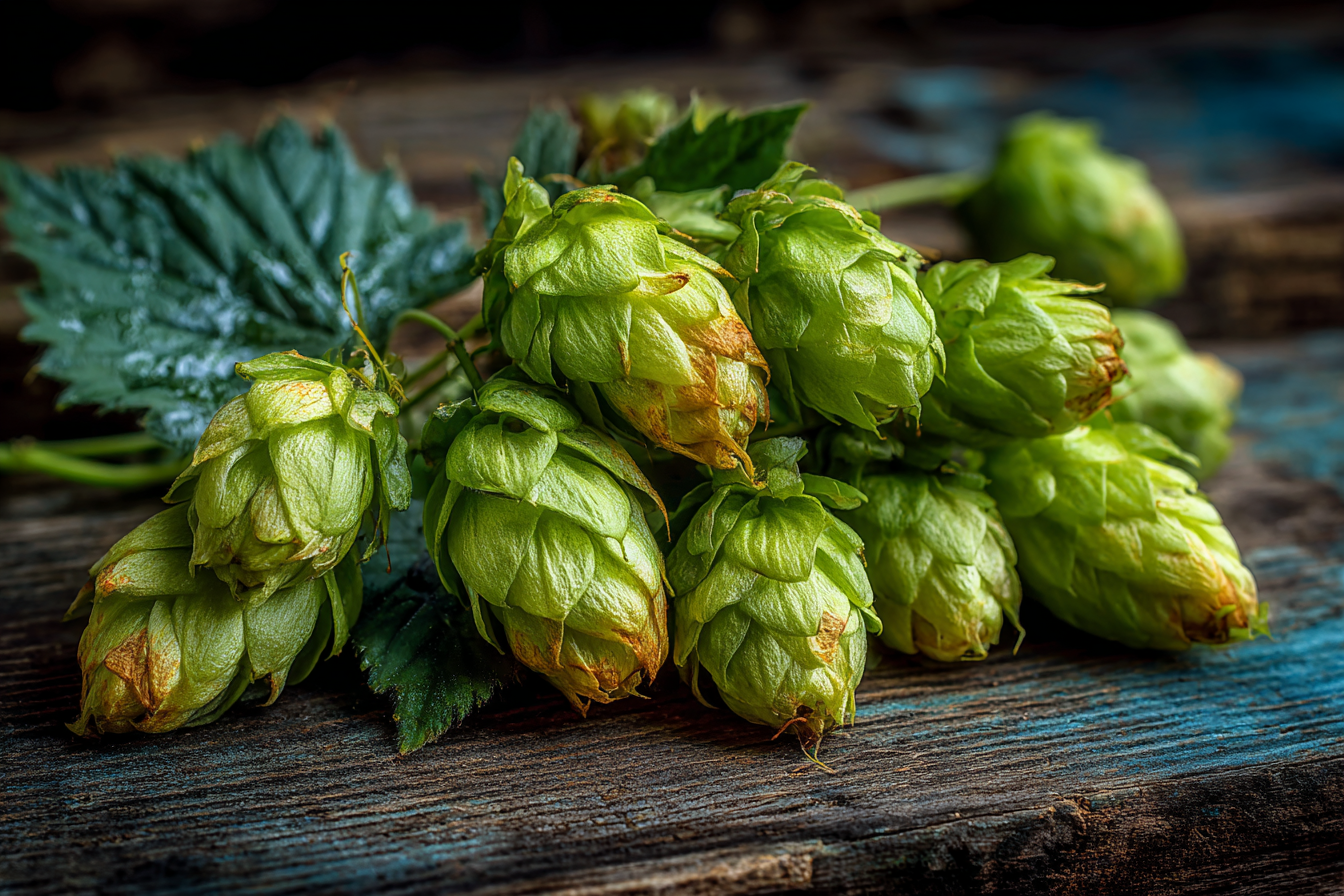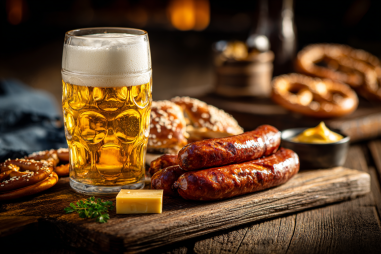When it comes to brewing Double IPAs, hops play the starring role. These bold, intense beers demand hop varieties that can stand up to their high bitterness and deliver complex aromas and flavors. Whether you’re a homebrewer experimenting at your kitchen setup or a craft brewer aiming to perfect your next batch, understanding the diverse world of hops is essential to crafting a memorable Double IPA. Let’s dive into the top hop varieties that will elevate your Double IPA game.
Introduction to Hops in Double IPAs
Double IPAs, also known as Imperial IPAs, are all about big flavors and bold bitterness, and hops are the heart of that experience. Unlike standard IPAs, Double IPAs use larger amounts of hops both in the boil and for dry hopping, which means hop selection significantly impacts the final product. The hops contribute not only bitterness but also aromatic layers that can range from citrusy and piney to floral, tropical, or resinous. Choosing the right hop varieties helps balance intense bitterness with enticing aromatic complexity, creating a beer that’s vibrant and well-rounded.
Characteristics of Popular Hop Varieties
Each hop variety brings its own unique profile to the glass, and understanding these characteristics is key to selecting the perfect hops for your Double IPA. Here are some of the most popular and effective hops used by brewers around the world:
- Citra: This hop is a favorite for Double IPAs thanks to its intense citrus aromas, featuring notes of grapefruit, lime, and tropical fruits like mango and passionfruit. It brings a punchy, juicy flavor that pairs perfectly with the bold malt backbone of a Double IPA.
- Simcoe: Known for its piney and earthy character, Simcoe also has subtle fruity undertones reminiscent of apricot or berry, adding complexity. It imparts a pine resin aroma with layers of citrus and fruity notes, making it very versatile.
- Mosaic: Mosaic hops are complex with a unique blend of tropical fruit, berry, and earthy pine flavors. They contribute a rich, multi-dimensional aroma that elevates any Double IPA.
- Amarillo: Amarillo is prized for its orange citrus character and floral notes. It offers a mild bitterness with a pleasant fruity and floral aroma that enhances hop complexity.
- Centennial: Often called a super Cascade, Centennial boasts floral, citrus, and pine notes. It pairs beautifully with other citrus-forward hops to create a balanced bitterness and aroma.
- Galaxy: This Australian hop is a powerhouse of intense passionfruit, peach, and citrus aromas, often lending a juicy, tropical character that shines in large quantities.
- Chinook: Chinook provides a sharper pine and spice aroma, along with grapefruit and herbal notes. Its assertive bitterness and aroma make it great for balancing sweeter malts.
How Hop Selection Affects Aroma and Flavor
The choice of hops directly affects both the aroma and flavor profile of a Double IPA. When hops are added early in the boil, they primarily contribute bitterness. Later additions focus more on flavor, and dry hopping is primarily about aroma. By using hops with different flavor and aromatic characteristics at each stage, brewers develop nuanced, layered profiles.
For example, using Simcoe or Chinook early in the boil will impart strong piney bitterness, while finishing with Citra or Mosaic late in the boil or dry hopping will bring vibrant tropical and citrus aromas. This balancing act is what creates the depth that beer lovers expect from Double IPAs — bitterness that hits just right and complex aromas that invite another sip.
Combining Hops for Layered Complexity
Using a single hop variety can sometimes result in a one-dimensional beer, so blending hops is an art that many brewers embrace to build complexity. Combining hops with complementary characteristics creates a richer profile. For example:
- Citra and Simcoe: The fruity juiciness of Citra balances the piney earthiness of Simcoe, resulting in a Double IPA that’s both refreshing and robust.
- Mosaic and Amarillo: Both hops offer fruity and floral notes but in different spectrums, creating a bright and fragrant aroma.
- Galaxy and Centennial: Galaxy’s tropical fruit intensity pairs well with Centennial’s floral and pine tones, producing a well-rounded aromatic experience.
Experimenting with hop combinations allows brewers to tailor their beer’s aroma and flavor to their desired style, ensuring each batch has a unique signature.
Regional and Experimental Hop Options
While traditional varieties dominate the Double IPA scene, a growing number of regional and experimental hops provide exciting new possibilities. Breweries in the Pacific Northwest, for instance, often harvest unique hop cultivars not widely available elsewhere. Some notable recent experimental options include:
- Strata: A newer variety with cannabis-like aroma alongside tropical fruit and berry notes.
- El Dorado: Known for its pear and watermelon flavors, it adds an interesting fruity twist to IPAs.
- Azacca: Bursting with mango, citrus, and pine notes, great for tropical-forward profiles.
Embracing these experimental hops can differentiate your Double IPA from the rest, offering creative brewers a fresh palette of flavors to explore.
Tips for Hop Substitution in Recipes
If you’re working from a recipe but don’t have the exact hop variety on hand, careful substitution can still allow you to produce a fantastic Double IPA. Here are some key tips:
- Match flavor profiles: Substitute hops that share similar dominant aromas and flavors. If a recipe calls for Citra, try another citrus-forward hop like Amarillo or Azacca.
- Adjust quantities: Some hops have higher alpha acids (bitterness) than others. Use brewing software or online calculators to gauge how much to add to maintain desired bitterness.
- Blend thoughtfully: When replacing a complex hop with a more straightforward one, consider blending multiple hops to approximate the original flavor.
- Dry hop carefully: Aroma contributions vary widely. Start with smaller amounts when swapping hops for dry hopping and adjust in future batches based on flavor results.
Substituting hops can lead to unique and pleasant surprises but always document your changes and outcomes so you can refine recipes with confidence.
Enhancing Your Double IPA with the Perfect Hops
Mastering hop selection is one of the most rewarding parts of brewing Double IPAs. By understanding the distinctive qualities of popular and experimental hop varieties, you gain control over bitterness, aroma, and flavor complexity. Combining multiple hops thoughtfully, experimenting with new varieties, and making informed substitutions all help you craft a Double IPA that’s boldly flavorful and uniquely yours. Whether you’re seeking piney resin, juicy tropical fruit, or bright citrus bursts, the right hops can transform your brew into something exceptional that beer lovers will savor sip after hop-packed sip.







